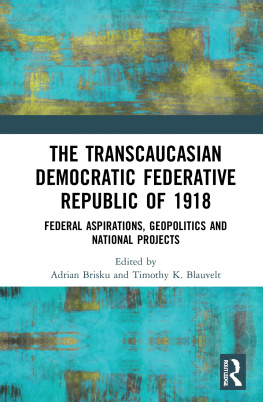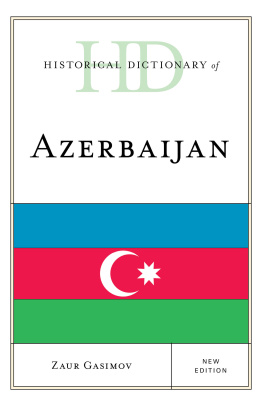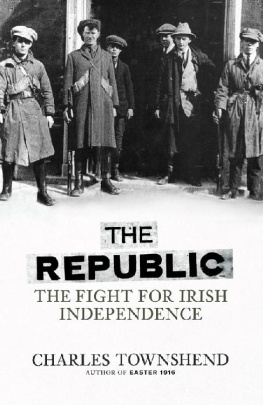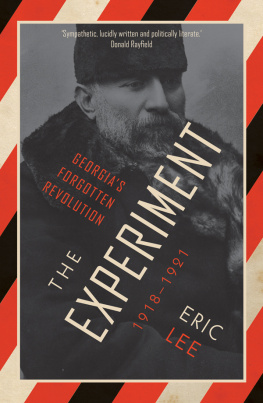The Transcaucasian Democratic Federative Republic of 1918
The Transcaucasian Democratic Federative Republic (TDFR) was a unique, bottom-up, and a fleeting display of political unity and federalism among the main Armenian, Azerbaijani and Georgian political factions between 22 April 1918, when it declared its independence, and 26 May 1918, when it was dissolved and replaced by the three nation-states of Armenia, Azerbaijan and Georgia. Focusing on a crucial but poorly understood moment in the modern history of the Caucasus at the end of the First World War, this book offers a systematic, contextually rich and multi-perspectivalArmenian, Azerbaijani, Georgian, Ottoman, German, British, American, Italian, Bolshevik, Ukrainian and North Caucasianaccount of the TDFR, drawing on contributions (with the new material from archives in Tbilisi, Grozny, Yerevan, Baku, Istanbul, Berlin, London, Washington D.C.) by a new generation of historians and scholars working on the region.
The book argues that despite its month-long existence in this geopolitically volatile region, the TDFR, with and its federative nature and the various discussions about federalism and federation that it provoked, continued to have an appeal for Georgians, Azerbaijanis, Armenians as well as for the Great Powers well beyond its dissolution. Moreover, the experience of the TDFR reifies federalism as a key political concept in the modern history of the Caucasus.
The chapters in this book were originally published as a special issue of the Caucasus Survey.
Adrian Brisku is intellectual historian working at Charles University (Prague), Czechia; University of Vienna, Austria; and Ilia State University (Tbilisi), Georgia. He is the author of Bittersweet Europe: Albanian and Georgian Discourses on Europe, 18782008 (Berghahn Books, 2013); Political Reform in the Ottoman and Russian Empires: A Comparative Approach (Bloomsbury, 2017); and National Economy-Building in Albania, Czechoslovakia and Georgia in the 1920s (Routledge, forthcoming 2023).
Timothy K. Blauvelt is Professor of Soviet and Post-Soviet Studies at Ilia State University (Tbilisi), Georgia, and is also Regional Director for the South Caucasus for American Councils for International Education. He has published more than two dozen peer-reviewed journal articles and book chapters. His book Georgia after Stalin: Nationalism and Soviet Power (edited with Jeremy Smith) was published by Routledge in 2015, and his next book, Clientalism and Nationality in an Early Soviet Fiefdom: The Trials of Nestor Lakoba, is forthcoming from Routledge.
First published 2021
by Routledge
2 Park Square, Milton Park, Abingdon, Oxon, OX14 4RN
and by Routledge
52 Vanderbilt Avenue, New York, NY 10017
Routledge is an imprint of the Taylor & Francis Group, an informa business
2021 International Association for the Study of the Caucasus
All rights reserved. No part of this book may be reprinted or reproduced or utilised in any form or by any electronic, mechanical, or other means, now known or hereafter invented, including photocopying and recording, or in any information storage or retrieval system, without permission in writing from the publishers.
Trademark notice: Product or corporate names may be trademarks or registered trademarks, and are used only for identification and explanation without intent to infringe.
British Library Cataloguing-in-Publication Data
A catalogue record for this book is available from the British Library
ISBN13: 978-0-367-74224-9 (hbk)
ISBN13: 978-1-003-15666-6 (ebk)
Typeset in Minion Pro
by codeMantra
Publishers Note
The publisher accepts responsibility for any inconsistencies that may have arisen during the conversion of this book from journal articles to book chapters, namely the inclusion of journal terminology.
Disclaimer
Every effort has been made to contact copyright holders for their permission to reprint material in this book. The publishers would be grateful to hear from any copyright holder who is not here acknowledged and will undertake to rectify any errors or omissions in future editions of this book.
Mikayel Zolyan

ABSTRACT
The period of the short-lived Transcaucasian Democratic Federative Republic (TDFR) or Transcaucasian Federation was from the Armenian perspective a traumatic one, defined by the military threat coming from the Ottomans and by the complicated relations with the other major ethnic groups of the region. The Armenian political elite and common Armenians were caught off-guard by the Russian revolution. The Turkish advance of the Caucasus Front was seen by Armenian political forces as an existential threat, yet this assessment was not necessarily shared by counterparts in the Transcaucasian Federation, especially the Muslim (Azerbaijani) political forces, leading to bitter divisions within the emerging Transcaucasian institutions. These two factors determined the Armenian perspective on the Transcaucasian Federation. The Armenian political entities (first and foremost the Dashnaktsutyun) were opposed to the creation of the Transcaucasian Federation, as they saw its emergence as the result of Ottoman pressure. Yet they were equally reluctant when it came to the transition from the Transcaucasian Federation to independent nation-states. This attitude was reflected in the fact that the Armenian National Council lagged behind its Georgian and Azerbaijani counterparts when it declared itself to be the central body of power in the Armenian-inhabited lands.
Introduction: the forgotten federation
It is common for national historiographies to construct narratives in which the focal point is the creation of the nation-state, usually presented as the achievement, or more often as the restoration, of independence. In Armenian historical narratives the creation of the independent Armenian nation-state is treated as an outcome of a centuries-long struggle for independence. Obviously, the short-lived First Republic of Armenia of 19181920 has a special place in the narrative of national history of Armenia, promoted through school textbooks, government rhetoric, state rituals, and holidays, and it is also commonly featured in the media (for a discussion of twentieth century Armenian history narratives and the place of the First Republic in them see Suny 1993, 119133; Libaridian 1999, 149161; Panossian 2006, 242262; Libaridian 2007, 1350). Meanwhile, the short-lived Transcaucasian Democratic Federative Republic (TDFR) receives much less attention, if any, within this narrative. Most history textbooks mention it only in passing, and when the Transcaucasian Republic does enter the narrative, it is perceived as a mere passing stage through which the Armenians had to pass in order to realize their age-old dream of independent statehood (on Armenian history textbooks, see Zolyan and Zakaryan 2008).
In fact, the creation of the independent Republic of Armenia in May 1918 was not so much the result of a concerted effort for a struggle for national liberation, as it was the outcome of the complicated geopolitical setting. Moreover, neither the Armenian population at large nor the Armenian political elites were actively campaigning for independence, and they were arguably ill-prepared for independence when it came about. Prior to the First World War, the national project among the political and intellectual elite focussed on the so-called Western [or Turkish] Armenia, the Armenian-inhabited regions within the Ottoman Empire. Eastern [or Russian] Armenia was considered to be better off within the Russian Empire, and even the most radical nationalist demands (e.g. those of the Dashnaktsutyun Party) went no further than seeking a certain level of autonomy. Similarly, the idea of an independent Transcaucasia had little appeal for the Armenian political class (on the Armenian political project prior to the years of independence, see Panossian 2006, 200214).






